In this Semi Hydroponic growing system Your plants roots settle into LECA balls and sip moisture and nutrients as the plant requires. Light Expanded Clay Aggregate is a great set up for plants with many advantages.
However, This is a VERY different way of growing houseplants from nurturing them in soil.
We go into all the information you will need to actually transition to Leca and take care of plants successfully with semi hydroponics.
This post includes a video demonstration of planting into these porous clay balls.
But first…you need good information on this growing system.
Read our entire POST series on LECA:
- The Pros and Cons of using this method to grow your plants.
- Learn Which Pots are best for LECA in this post.
- And read about which Plants are the best options for this semi hydroponic growing system.
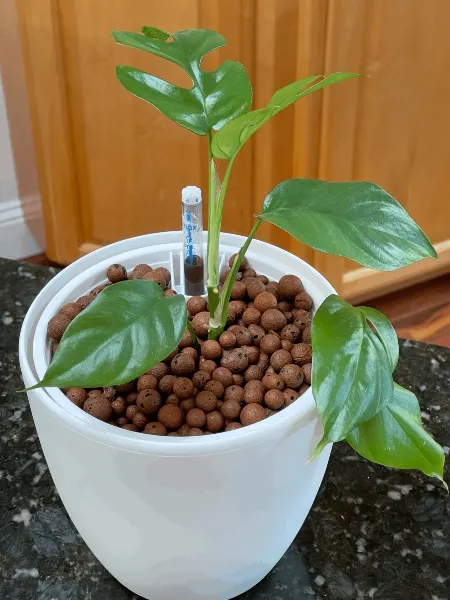
Shop LECA and LECA supplies on ETSY:
Etsy has MANY great options for leca and all the supplies you need to grow with this method. There are many great shops to support on Etsy.
Prepare Light Expanded Clay Aggregate as a growing medium.
When you purchase lightweight expanded Clay aggregate (I Use Hydroton Brand) it is dusty and dry. It is not ready for planting. Here’s what you need to know to get it ready for proper planting.
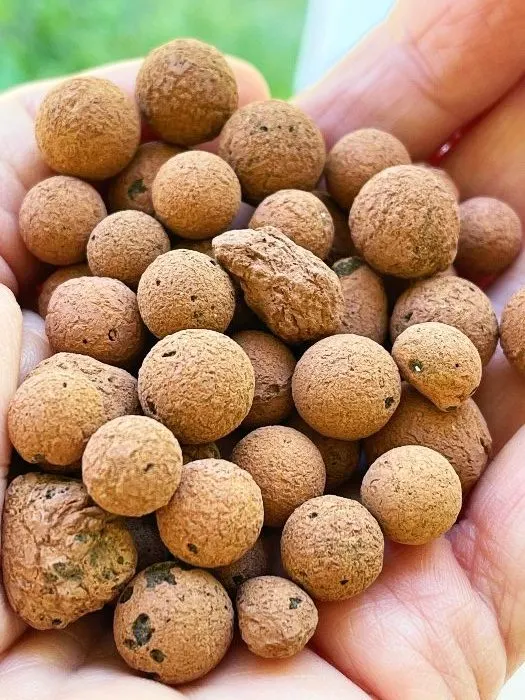
- Rinse the clay balls outside your house to remove the exterior clay dust off the clay balls. I use a colander and garden hose for this. The dust can accumulate in your water pipes so don’t use your indoor sinks for this.
- Fill a container with new water and pour in the rinsed balls.
- Now dump out that water.
- Rinse the leca balls and put it in a large bowl covered with more water to soak.
How Long Do You Soak LECA Balls?
I recommend a minimum soak of well rinsed Leca for 24 hours. This ensures the clay pebbles have completely absorbed the water. Can you soak it less? Sure, but your plants roots NEED the moisture they will sip off your LECA.
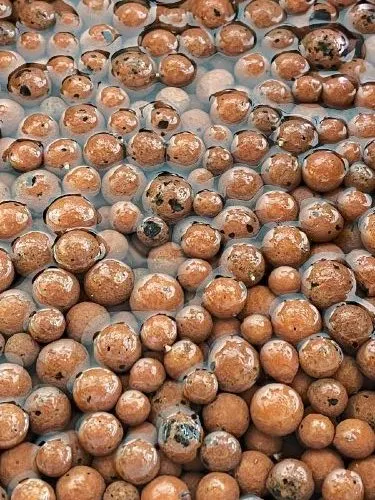
If the clay is not fully hydrated it will also be wicking water up from the plant pot. You do NOT want your plant roots competing with the thirsty clay balls for the moisture they need.
Give the plant roots fully moisturized clay balls or they will shrivel and die. Do a proper soak.
NOTE: It is often recommended to soak much longer. Even several weeks. I have done this for my Calatheas and it works great as well…there are a LOT of different opinions on how long to soak LECA and how many rinses it needs.
There are two purpose of the soaks and rinses. You need to thoroughly hydrate the LECA. And you need to remove the extra unwanted water hardening particles and chemicals in the clay balls.
For your sensitive plants more rinses and longer soaking times of the LECA makes sense. Especially if they are very sensitive to hard water. This is also why I use distilled water for the final soak.
Soaking Add Ins:
These add ins can also help mitigate problems with your transitioning plants.
- Calcium/Magnesium solution will help extract chemicals and balance the hardness of the LECA while it is soaking.
- A rooting hormone like Super Thrive or KLN will encourage your plants roots to transition more easily to LECA.
When do you need to Boil LECA?
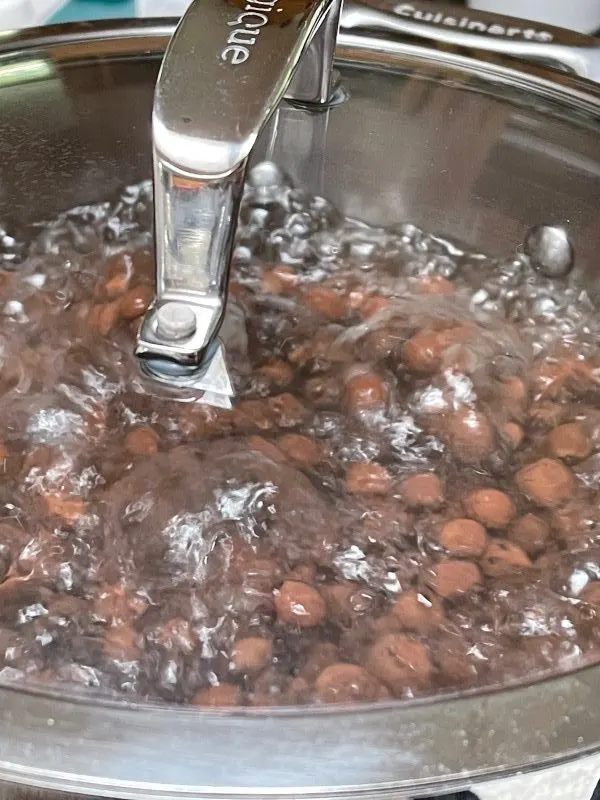
One of the great things about LECA is it can be reused. Be sure to Boil it when you are reusing it. Every time. This will sterilize the clay pebbles and make sure no nasty fungi or bacteria have survived.
I boil LECA for my more sensitive plants like Calatheas even when it’s newly purchased. Boiling ensures NOTHING is in there that can bother them.
Boil LECA after it is washed well. I boil mine about five minutes. This is enough to get the balls sterile. Now pour out the boiling water and rinse the LECA in good clean water. Soak!
Alternately: you can also sterilize the clay balls by adding 2 to 3 tsp. /gallon Of 3% food grade hydrogen peroxide to your soaking water. Let it sit an hour. Pour out the water and soak again for the remaining soaking time.
PH AND Water Hardness:
All tropical plants (which most houseplants are) prefer soft water with a PH range of 5.5 to 6.5. But many plants can tolerate higher PH and harder water.
My well water has roughly a PH of 8 with PPM of WAY over optimal for most tropical houseplants. So I’ve had to learn which plants I have that tolerate poor water conditions and which can’t handle it.
Mostly I learned how to adjust my water to suit the plants. 🙂 They grow best in good water.
BEST PRACTICE: Soak the clay balls in water with PH adjusted to the 5.5 to 6.5 range. I use distilled water for boiling and soaking LECA for my Calatheas to make sure the water is also free of minerals my fussy girls cannot tolerate.
Planting in LECA:
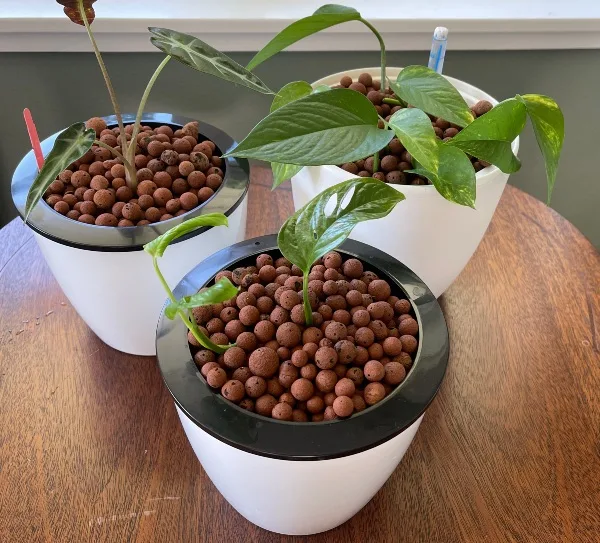
Know Your Plant Needs:
It’s very helpful to know your plants needs before you begin with hydroponics. Monstera, pothos, and other sturdy vines are less fussy and more capable of easily transitioning to semi hydroponics with little or no trouble.
Its really quite simple to plant into Light Expanded Clay Aggregate balls once you have the proper supplies and a well prepared plant. These are discussed below.
Tools and Materials:
- Soaked LECA
- Prepared Plant
- Proper Leca Pot
- PH balanced water (distilled water preferred)
- hydroponic nutrients
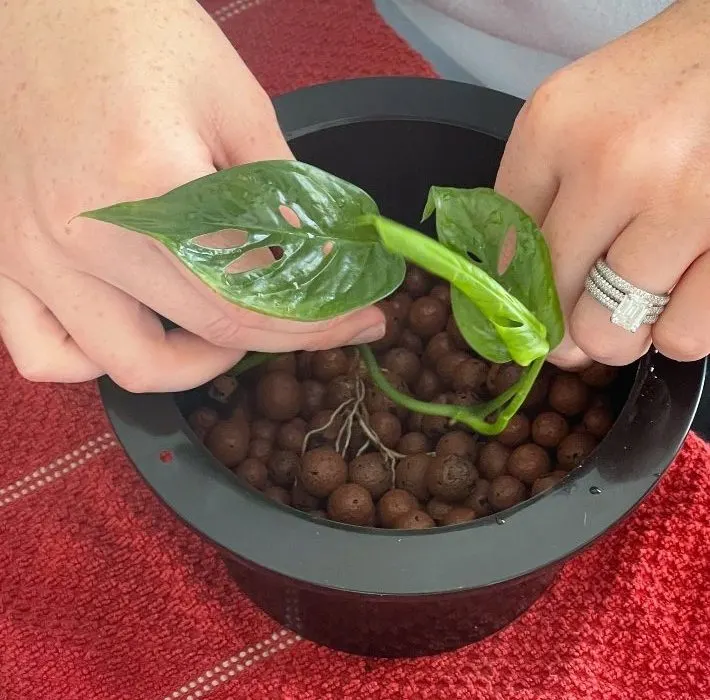
The Pot:
Read our Post on choosing the best pot for LECA before you buy. The proper pot is important.
The Liquid Nutrient Base:
Clay balls and plain water will NOT feed your plant. You need to add nutrients to the liquid in your pot to feed the plant. I use this Trio of hydroponic fertilizers. It gives me the most control over the nutrient balance my various plants need.
Fill your pot only 1/3 up from the bottom with the liquid nutrients. Your Leca will wick up the liquid and provide the plant roots with just the right amount of it. The roots will take only what they need from the Leca.
If you fill the pot to the top of the leca your plant will drown. Leave 2/3 of the pot clay balls. This allows the plant roots to breathe and sip only what they need.
The Plants:
Water propagated rooted cuttings
Read more on water propagation in our propagating Pothos Post. Plants with water roots will have an easier transition since they already survive in water. Their roots are already prepared to absorb nutrients from your leca and the hydroponic nutrients.
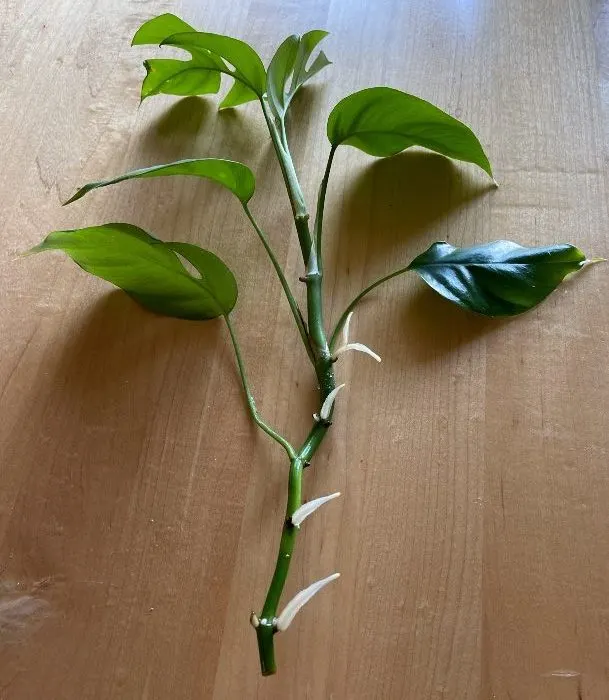
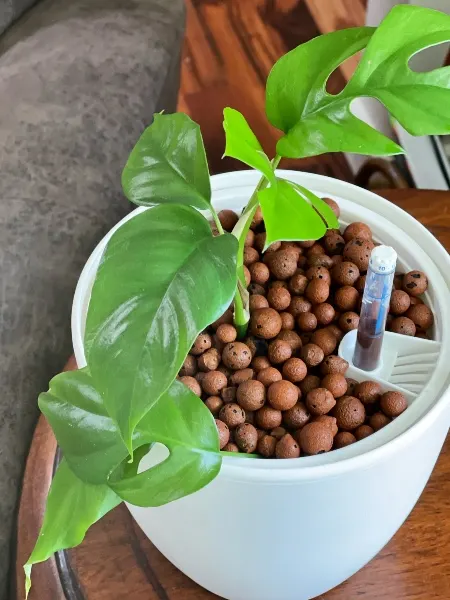
Soil planted plants:
Soil transplants are going to have a rougher transition for two reasons. First you have to remove ALL the soil from the roots which the plant is not going to like. You have to be careful NOT to damage the roots while doing this.
AND…you do have to get ALL of the soil off the roots or you will be facing root rot. The soil will make the roots suffocate in semi hydroponic conditions .
Since the roots are soil roots they are not capable of absorbing liquid nutrients as well as water roots. So the plant will go into shock in the second week or so and may take a month or more to recover. Some may not be able to handle the transition very well.
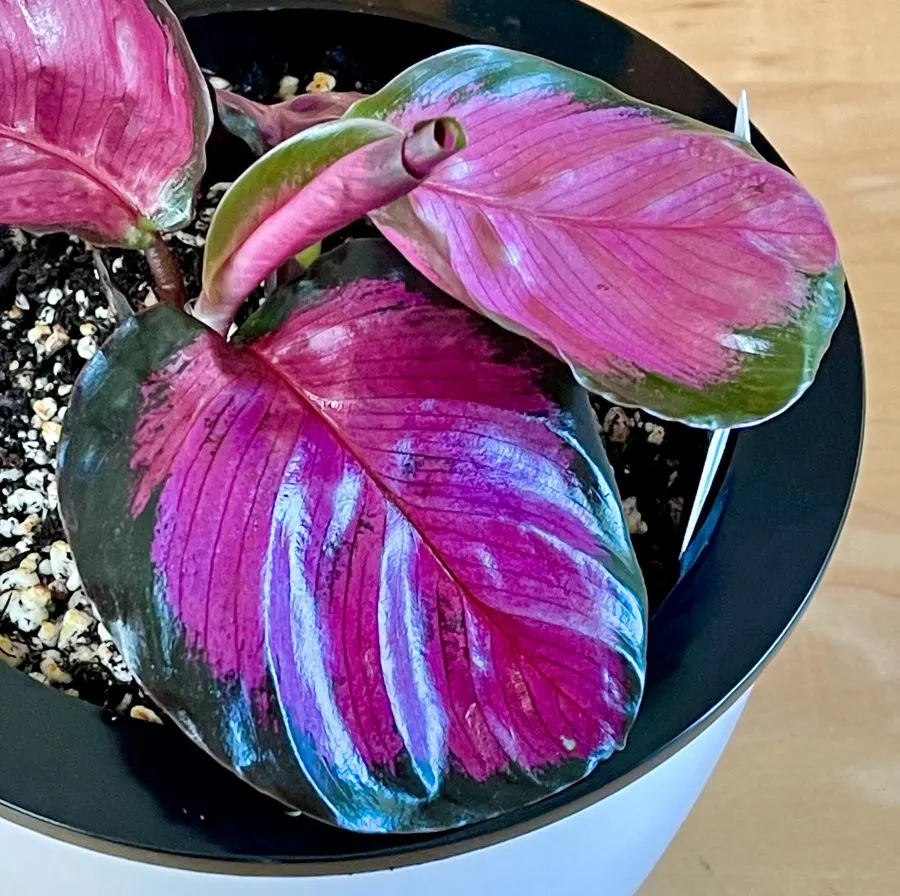
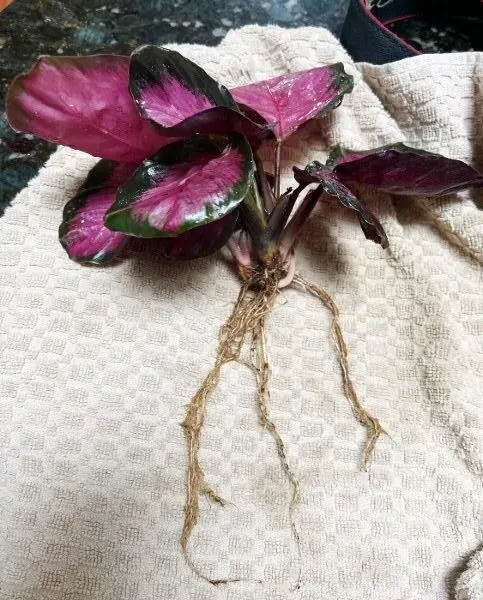
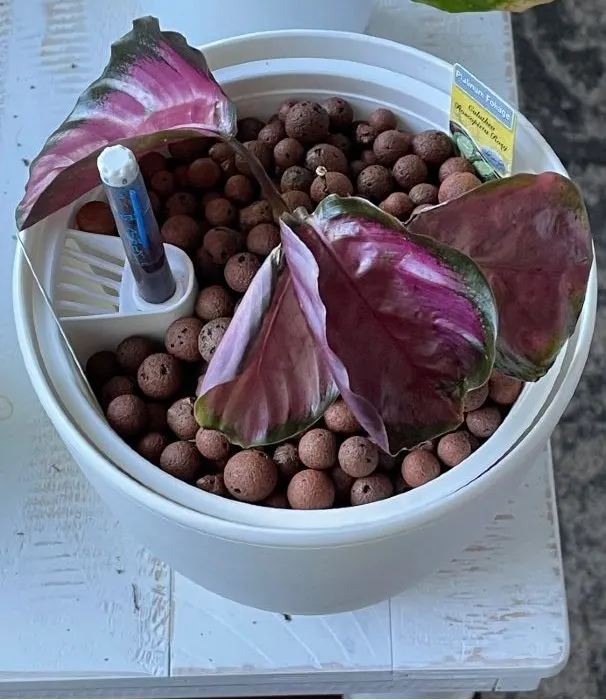
Again sensitives like Calatheas are going to be more tramatized than toughies like Pothos. Choose sturdy small plants with fewer roots for soil transitions.
It is NORMAL for plants to go into shock when transitioned to LECA. They make take several weeks to adjust and grow water roots.
Larger plants with massive roots are NOT good candidates for replanting into LECA. you might be able to do it but the plant may also be stunted or otherwise permanently harmed.
Planting Process:
Watch Kayti Plant two plants into this growing system. She plants a water propagated pothos vine. And Then she demonstrates transitioning a Monstera Adonsoni from soil to LECA.
Two weeks later both of these vines are doing great and showing new growth.
Maintaining your Plants in Leca:
Now your plant is happily growing in Light expanded clay aggragate. What do you do now?
Mostly nothing but enjoy your plant. This growing system is designed to be pretty hands off. The plant will self manage its watering as long as the nutrient reservoir is going up into the Leca.
However, Maintaining plants in these clay balls requires you to flush the pot every two weeks or so to avoid an accumulation of salt build up on the clay balls (it does look like salt on the top of the clay). The build up is from the nutrients accumulating in the LECA. It needs to come off so it doesn’t eventually burn the plants roots.
Flush the pot by removing the planted leca pot from the non draining liquid reservoir. Pour water through the leca until the salt build up is gone. You will see the white accumulations vanish. Make sure you flush it thoroughly.
Caution:
Choose a pot that allows you to manage the plant WITHOUT disturbing the roots. Read our post on choosing pots for LECA.
There are transparent draining pots for Orchids that allow you to monitor plant root health if you want to do that. Just set them in a non draining reservoir pot.
You will find lots of YouTube videos that show plant people dumping out their plant and LECA onto a table so they can flush the pot. They are disturbing and handling the roots every time they do a LECA flush.
We don’t recommend disturbing plant roots. Its bad enough to scrub the dirt off the roots initially. Let them grow undisturbed in semi hydroponics as much as possible.
Shop LECA pots on Etsy
Roots have tiny delicate parts that are needed to optimally absorb nutrients. And damaged roots will be more susceptible to disease. Not what we want.
PLEASE leave your plant roots undisturbed. Just separate the planted leca pot from the reservoir. Leave the roots in the leca. Pour water through the leca until the salt is gone and the water drains clear through the pot. Then return the Leca pot to the reservoir.
This is much better for the plant. When you do the flush check the liquid in the reservoir. Is it clean? Do you need to add more?
NOTE: I periodically check the liquid reservoir PH with my PH monitor to make sure the LECA clay is not increasing the PH of the liquid nutrients over the plants happy zone.
I hope this gives you all the information you need to confidently grow your plant in the LECA semi hydroponic method.
If you have questions or comments please post them. We love to plant chat.
Follow Us:
Find us on YouTube, Instagram , Pinterest and TikTok! We love to Plant chat. We also comment, like and occasionally share your content to our daily stories. We’d love to see your plants. Share your joy in your houseplants. Happy Planting!
Related Content:
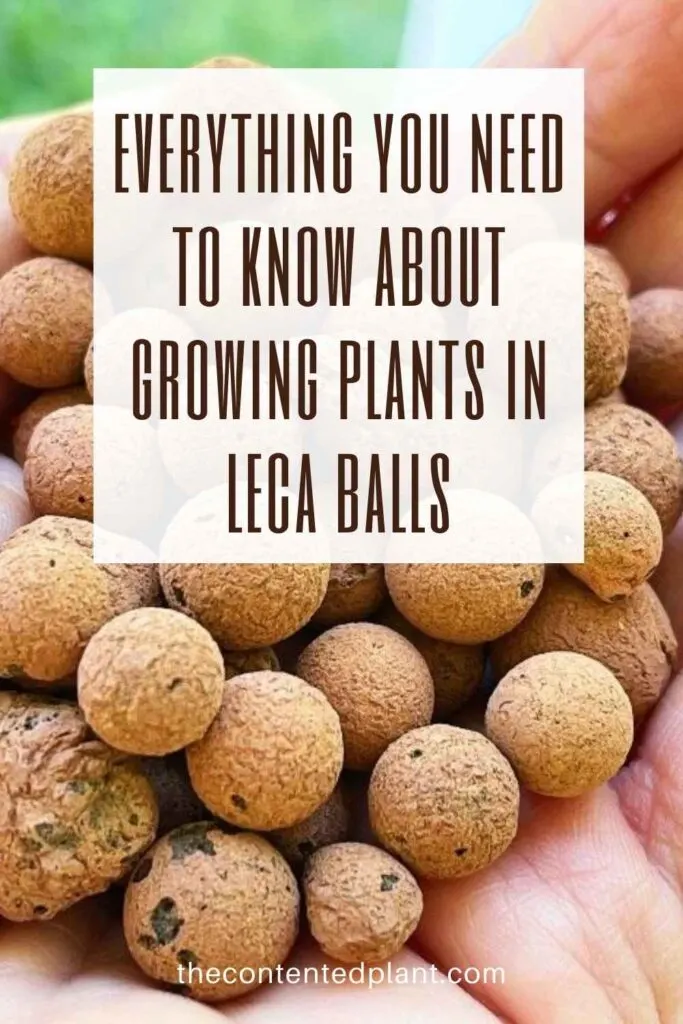

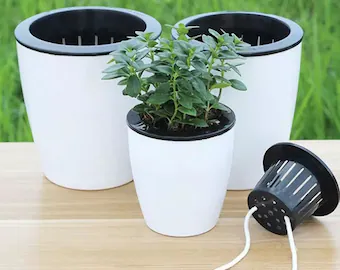

How To Repot A Plant - The Contented Plant
Tuesday 22nd of November 2022
[…] Pot Depth: Again, too deep a pot will hold water in the soil too long. Even a well drained pot will hold waterlogged soil too long around the roots if there is too much soil in the pot. This leads to root rot. If you want to use a deep pot fill the bottom with good drainage rock or LECA clay balls. […]
Lucky Bamboo Plant Profile and Care guide - The Contented Plant
Tuesday 22nd of November 2022
[…] have been growing plants in LECA using this nutrients system over a year now and they all do well on it. Sanderianas will also grow […]
Choosing the Best Succulent Pots - The Contented Plant
Sunday 6th of November 2022
[…] a pot or planter that it too deep for the root size of your succulent add a layer of drain rock or leca balls to the bottom of the pot. This will increase drainage and allow the soil to […]
Mold On Plant Soil-Is it harmful? How to Kill It - The Contented Plant
Sunday 6th of March 2022
[…] option is to switch your plants over to a semi hydroponic substrate like LECA clay balls. Or another fully hydroponic growing […]
Snake Plant Propagation - The Contented Plant
Saturday 12th of February 2022
[…] You can cut off the side shoots, called pups, at the rhizome and plant them in a separate planter with soil or LECA. […]